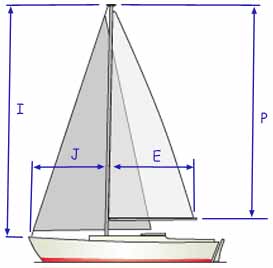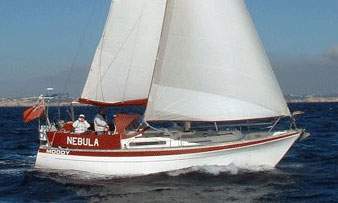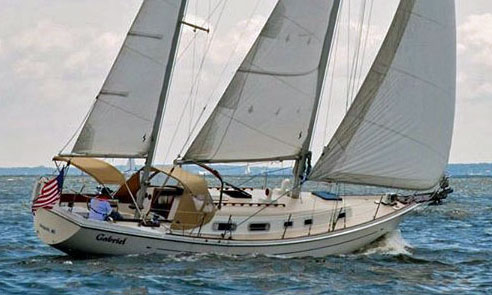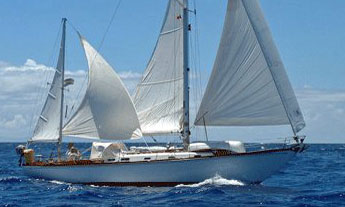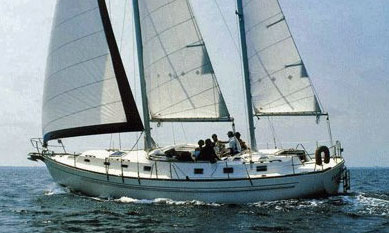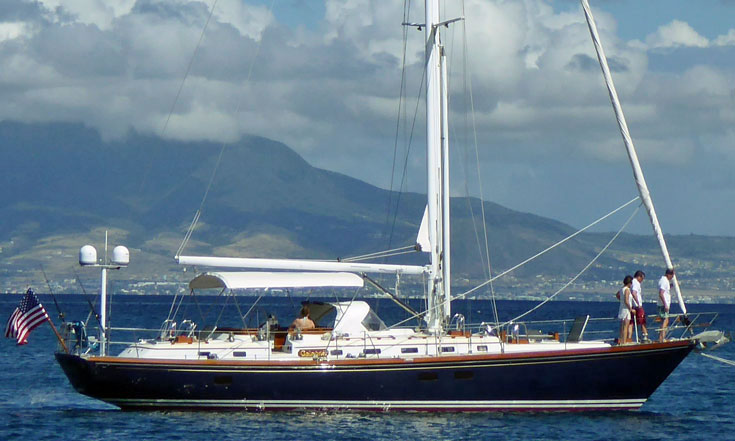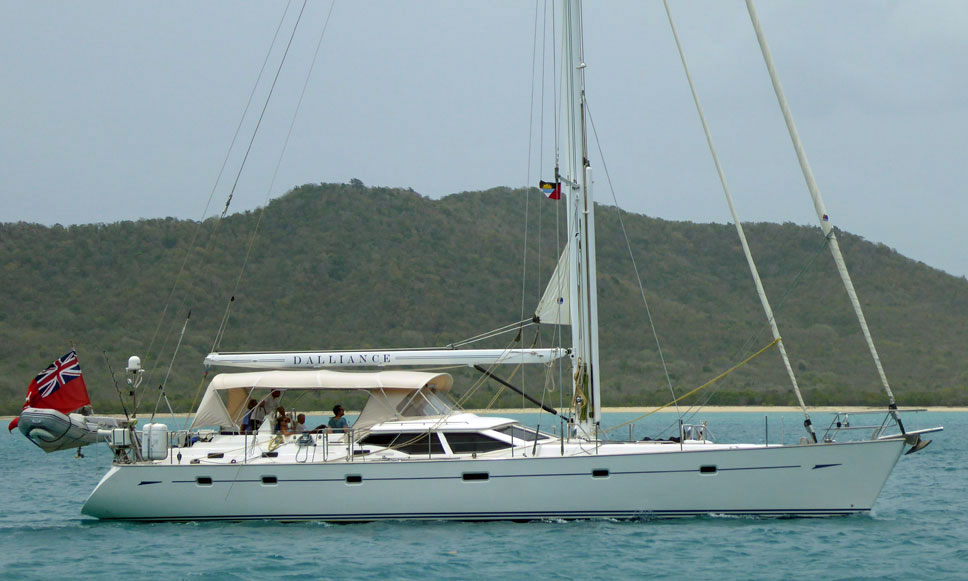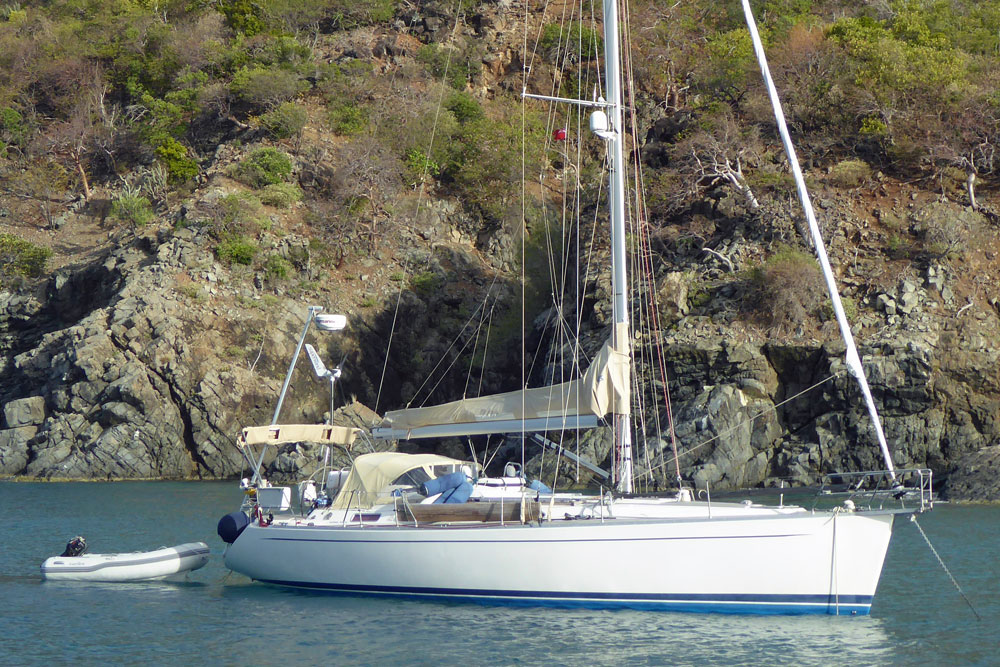- Home
- Cruising Yachts 35' to 40'
- Sweden Yachts 390
The Sweden Yachts 390 Sailboat
Specs & Key Performance Indicators
The Sweden Yachts 390 is a 39-foot sailing yacht designed by Swedish naval architect Peter Norlin. Built by Sweden Yachts in Sweden between 1989 and 1997, approximately 270 hulls were produced. The 390 features a GRP hull and deck, fin keel with spade rudder, and a sloop rig. With a displacement of 7,800 kg and a ballast ratio of 41%, the 390 is considered a moderate displacement, performance cruiser.
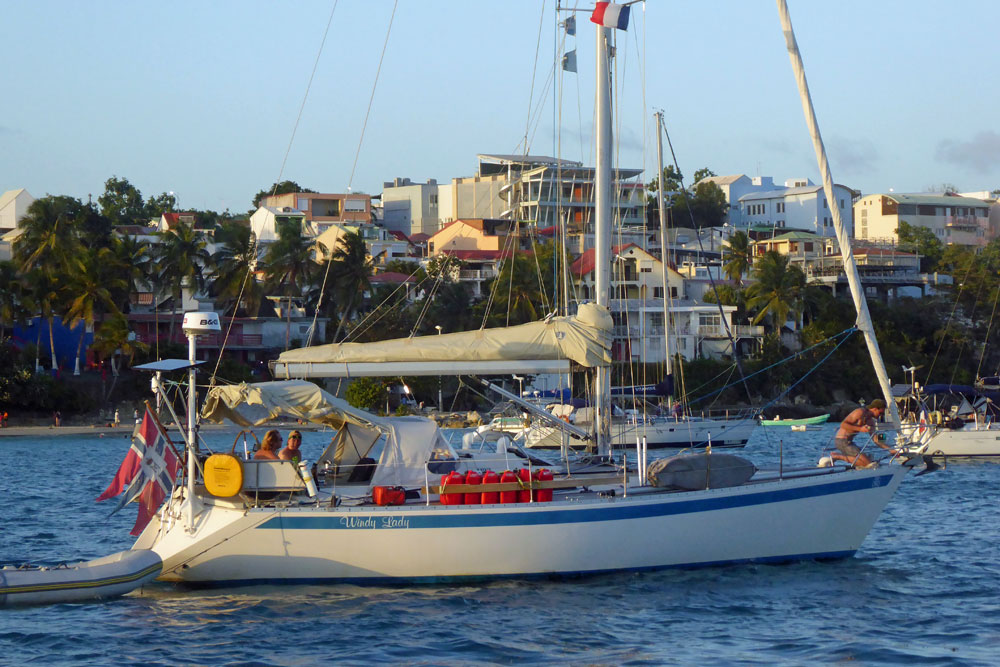 A Sweden Yachts 390
A Sweden Yachts 390Published Specification for the Sweden Yachts 390
Keel & Rudder Configuration: Fin keel with spade rudder
Hull Material: GRP (Glass Reinforced Plastic)
Length Overall: 11.99m (39'4")
Waterline Length: 10.40m (34'1")
Beam: 3.96m (13'0")
Draft: 1.95m (6'5")
Rig Type: Sloop
Displacement: 7,800 kg (17,200 lbs)
Ballast: 2,800 kg (6,173 lbs)
Water Tank Capacity: 360 L (95 US gal)
Fuel Tank Capacity: 150 L (40 US gal)
Hull Speed: 7.8 knots
Designer: Peter Norlin
Builder: Sweden Yachts, Sweden
Year First Built: 1989
Year Last Built: 1997
Number Built: Approximately 270
Options & Alternatives
Draft: The 390 came with a standard deep draft of 1.95m (6'5"). However an optional shoal draft version also produced drawing 1.8m (5'9").
Interior Layouts: While the hull and deck remained consistent, Sweden Yachts offered buyers a choice between two main interior layouts:
- Two-cabin layout: This layout featured a spacious aft owner's cabin with a double berth and a smaller forward cabin with a V-berth. It was popular with couples or those who prioritized a larger owner's cabin.
- Three-cabin layout: This layout included a smaller aft cabin with a double berth and two forward cabins, each with a V-berth. It was better suited for families or those who anticipated frequently sailing with guests.
Sail Areas & Rig Dimensions
Sail Area
- Total Sail Area: 70.5m2
- Mainsail Sail Area: 31.7m2
- Foretriangle Sail Area: 38.9m2
Rig Dimensions
- I: 16.2m
- J: 4.8m
- P :14.9m
- E : 4.3m
Where:
- “I” (the foretriangle height) is measured along the front of mast from the highest halyard to the main deck. The main deck is where the deck would be if there were no deckhouse.
- “J” (the foretriangle base) is measured along the deck from the headstay to the mast.
- “P” (the mainsail luff length) is measured along the aft face of the mast from the top of the boom to the highest point that the mainsail can be hoisted.
- “E” (the mainsail foot length) is measured along the boom from the after face of the mast to the outermost point on the boom to which the main can be pulled.
Published Design Ratios
The Key Performance Indicators (KPIs)
- Sail Area/Displacement Ratio: 18.62
- Ballast/Displacement Ratio: 41.44
- Displacement/Length Ratio: 231.31
- Comfort Ratio: 26.0
- Capsize Screening Formula: 1.99
The following analysis of the primary design ratios gives an indication of the boat's likely sailing characteristics, but see the 'Notes of Caution' that follow below:
1. Sail Area/Displacement Ratio (18.62): This indicates the power-to-weight ratio of the boat. With a ratio of 18.62, it suggests reasonably good performance. Not too high, not too low—just the right amount of muscle to cut through the waves without being underpowered.
2. Ballast/Displacement Ratio (41.44%): A stiffer, more powerful boat! A ratio above 40% means it stands firm against the wind, providing stability and strength. You can expect this yacht to handle a good deal of wind without being heeled excessively.
3. Displacement/Length Ratio (231.31): This places the Sweden Yachts 390 in the moderate displacement category. It's well-balanced, offering enough heft to sail steadily without requiring too much sail area to reach its design hull speed.
4. Comfort Ratio (26.0): Indicates a somewhat lively motion, typical of a coastal cruiser with moderate stability. You might feel a bit of the sea’s motion, but it won't be as jarring as a lightweight racing boat.
5. Capsize Screening Formula (1.99): This score tells us the boat is well-suited for ocean passages. The lower the number (below 2.0), the better its capability to withstand capsizing. Safe for the adventurous sailor seeking blue water sailing.
In essence, the Sweden Yachts 390 is a well-rounded cruiser. It’s got the power and stability to handle various wind conditions and offers a comfortable ride suitable for both coastal cruising and ocean passages.
Design Ratios: Notes of Caution...
- The Sail Area/Displacement Ratio (SA/D): This ratio provides an estimate of the sail power relative to the boat's weight, which can indicate potential speed in various wind conditions. But it doesn't account for the efficiency of the sail plan, the rigging, or the skill of the crew. Real-world performance can vary significantly based on these factors.
- The Ballast/Displacement Ratio (B/D): This ratio gives an idea of the boat's stability and stiffness, which is crucial for handling and safety. But it doesn't consider the distribution of the ballast or the hull shape, both of which can greatly affect stability. A high B/D ratio alone doesn't guarantee a stable boat if the ballast is poorly distributed.
- The Displacement/Length Ratio (D/L): This ratio helps predict the boat's speed potential and its behaviour in different sea conditions. But it doesn't account for the hull design or the boat's overall weight distribution. Two boats with the same D/L ratio can perform very differently if their hull shapes are different.
- The Comfort Ratio (CR): This ratio estimates the boat's motion comfort in a seaway, which is important for long passages. But it doesn't consider the boat's interior layout, which can also affect comfort. Additionally, personal tolerance to motion varies, so a boat that is comfortable for one person might not be for another.
- The Capsize Screening Formula (CSF): This formula assesses the likelihood of a boat capsizing in heavy seas, which is critical for offshore safety. But it doesn't take into account the boat's handling characteristics or the skill of the crew. A boat with a low CSF can still capsize if poorly handled in severe conditions.
General Limitations
- Static Nature: These ratios are static measurements and don't account for dynamic factors like wave action, wind gusts, or crew actions.
- Simplification: They simplify complex interactions into single numbers, which can be misleading. Real-world performance is influenced by a multitude of factors that these ratios can't fully capture.
- Context: The context in which the boat is used (e.g., coastal cruising vs. offshore racing) can greatly affect how these ratios should be interpreted.
In summary, while these ratios provide valuable insights into the theoretical performance characteristics of a sailboat, they should be used as part of a broader assessment that includes practical experience, sea trials, and expert advice.
More Specs & Key Performance Indicators for Popular Cruising Boats
The above text was drafted by sailboat-cruising.com using GPT-4 (OpenAI’s large-scale language-generation model) as a research assistant to develop source material; we believe it to be accurate to the best of our knowledge.
Other sailboats in the Sweden Yachts range include:
Recent Articles
-
Anchoring in Tidal Creeks and Estuaries
Mar 09, 25 11:13 AM
Anchoring in Tidal Creeks and Estuaries presents unique challenges for boaters. Learn essential techniques to secure your vessel safely in these dynamic environments. -
Contessa 35 Specs & Key Performance Indicators
Mar 09, 25 08:05 AM
The Contessa 35 blends classic design with modern performance. Discover its specs and key performance indicators, showcasing this yacht's excellence in every aspect. -
The Dufour 455 Grande Large Sailboat
Mar 08, 25 05:55 PM
Interested in the Dufour 455 sailboat? Here are the pics, specs and performance predictions you're looking for...
